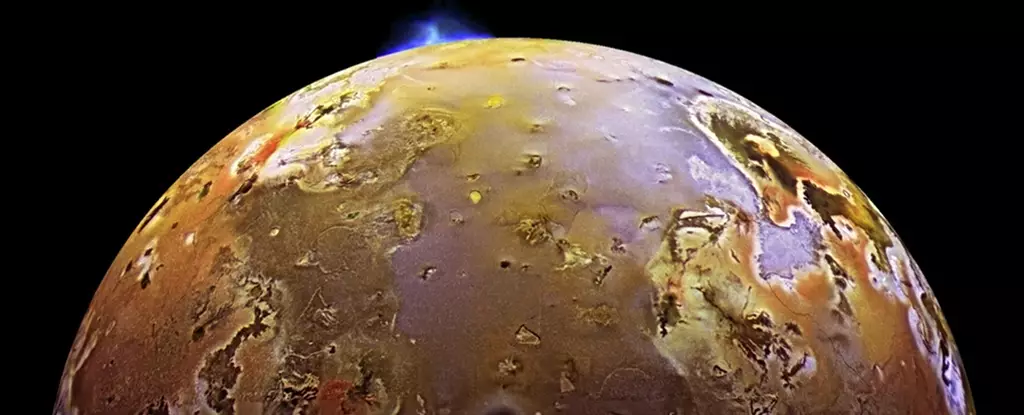The Large Binocular Telescope (LBT), situated on Mount Graham in Arizona and managed by the University of Arizona, is a part of the next generation of extremely large telescopes (ELTs). With two primary mirrors measuring 8.4 m (~27.5 ft), it boasts a collecting area slightly larger than that of a 30-meter (98.4 ft) telescope. Equipped with incredible resolution, adaptive optics, and cutting-edge instruments, ELTs like LBT are anticipated to delve deeper into the Universe, providing striking images of everything from distant galaxies to objects within our Solar System.
SHARK-VIS Instrument and High-Resolution Images of Io
Recently, an international team led by the University of Arizona utilized the LBT to capture the highest-resolution images ever taken of Jupiter’s moon Io using a ground-based telescope. The team, headed by Al Conrad, an Associate Staff Scientist at the University of Arizona’s Department of Astronomy, Stewart Observatory, and the Large Binocular Telescope Observatory, cooperated with researchers from prestigious institutes like the University of California, Berkeley, the California Institute of Technology, and NASA’s Jet Propulsion Laboratory. These groundbreaking images were made possible by the LBT’s new instrument, SHARK-VIS, and its adaptive optics system.
The SHARK-VIS instrument, a high-contrast optical coronagraphic imaging tool developed and constructed at INAF-Osservatorio Astronomico di Roma, was combined with the LBT’s extreme Adaptive Optics system to capture these astonishing images. This cutting-edge instrument contains a “fast imaging” camera that effectively counteracts optical distortions caused by atmospheric interference. The processed data, utilizing advanced software like Kraken, unveiled Io in an unparalleled level of detail. The images uncovered a major resurfacing event around Pele, one of Io’s prominent volcanoes, presenting deposits from an eruption at Pillan Patera, a nearby volcano.
Io, being Jupiter’s innermost Galilean moon, has long captivated scientists due to its volcanic activities. By monitoring these eruptions on Io’s surface, researchers aim to gather insights into the tidal heating mechanism triggering its intense volcanism. Not only does studying Io aid in understanding planetary processes within our Solar System, but it may also provide valuable information for identifying geological activity on exoplanets. This research, conducted using the LBT and SHARK-VIS, is essential in unraveling the mysteries of planetary volcanism and its impact on planetary evolution.
Simone Antoniucci, the SHARK-VIS instrument scientist, envisions new observations of celestial bodies throughout the Solar System with unprecedented clarity. This innovative technology holds the potential to unveil intricate features on various solar system objects, including moons of giant planets and asteroids. The sharp vision provided by SHARK-VIS opens up possibilities for studying planetary surfaces in greater detail, potentially leading to breakthrough discoveries in planetary science.
The utilization of the Large Binocular Telescope in capturing high-resolution images of Jupiter’s moon Io signifies a significant milestone in observational astronomy. The detailed insights gained from these images not only deepen our understanding of Io’s volcanic characteristics but also hold implications for planetary research beyond our Solar System. The advancements made in instrumentation, such as SHARK-VIS, pave the way for future discoveries that could revolutionize our knowledge of planetary processes and geological activities in the universe.


Leave a Reply